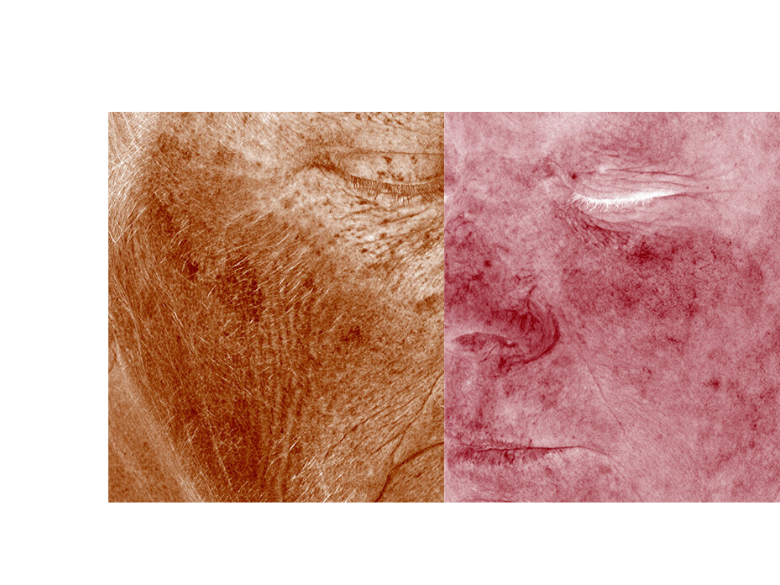
Pop quiz: Do you know the difference between a “red channel” and a “brown channel”?
As a science-focused brand, we take our clinical studies seriously. We use the Visia Complexion Analysis System, which is the gold standard in RBX imaging technology, in order to detect, analyze, and communicate skin conditions that might not otherwise be apparent to the naked eye. Visia helps us to view what’s going on just below the skin’s surface and measures conditions such as inflammation, lines, UV spots, wrinkles, and even enlarged pores. Here, we break down how we use both “red channels” and “brown channels” to detect hyperpigmentation and its underlying causes in order to measure the assess the efficacy of an Ourself regimen.
Quick review: We know that melanin and inflammation can cause dark spots. The primary colorants of the skin are melanin and hemoglobin, which we can view on subtopical layers of the skin using the Visia camera.
BROWN CHANNEL
This Visia image gives us a subtopical view of melanin in the skin. As you can see in the “after” image, this study participant shows significant improvement in the uneven pigmentation after a five week regimen using Daily Dark Spot Intercept, Daily Renewal Cream, and Mineral Sunscreen Broad Spectrum SPF 50.

RED CHANNEL
This Visia image gives us a subtopical view of hemoglobin in the skin, which shows underlying inflammation that can lead to hyperpigmentation. The “after” image conveys an overall reduction in inflammation after the study participant followed a five week regimen using Daily Dark Spot Intercept, Daily Renewal Cream, and Mineral Sunscreen Broad Spectrum SPF 50.






